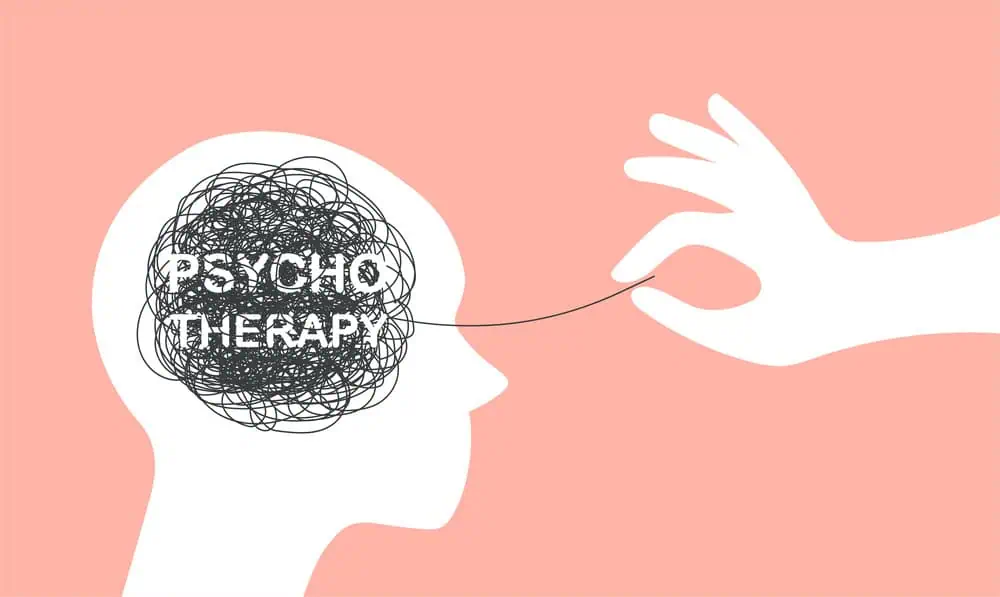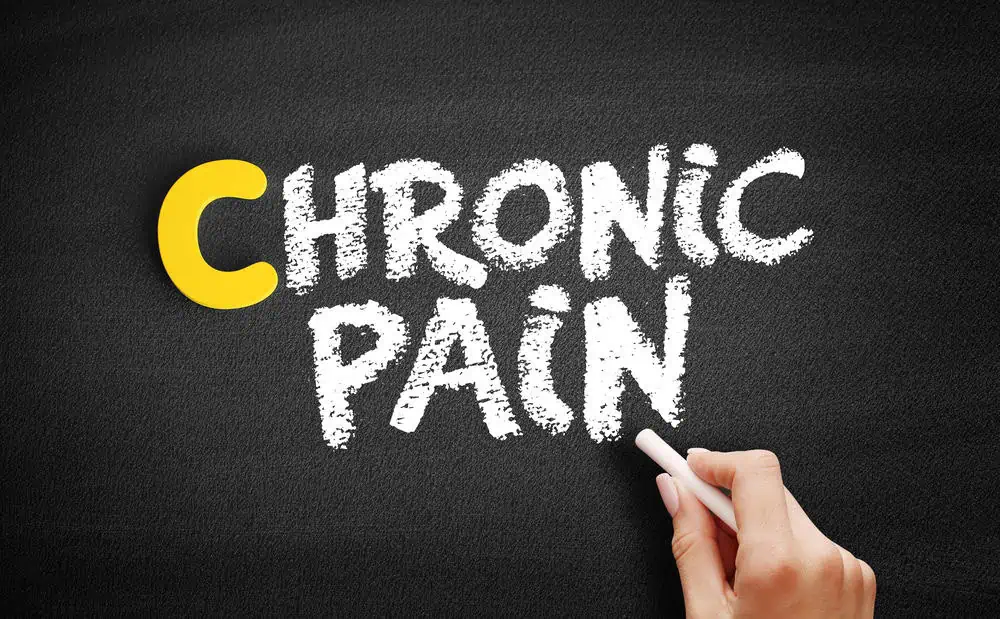Pain extends far beyond a mere physical sensation; it encompasses a complex interaction between our bodies and minds. As we encounter pain, our psychological state can profoundly influence how we perceive, react to, and manage this discomfort. Recognizing the inherent connection between the mind and body, scientists and healthcare professionals advocate for a comprehensive approach to pain that considers both the physiological and psychological dimensions. Our mental processes play a critical role in pain modulation and coping strategies, making psychological interventions as vital as medical treatments in pain management. We will explore all of the aspects of the psychology of pain and how to best manage chronic pain, which is the number one contributor.
The field of psychology offers valuable insights into the mechanisms by which we appraise and cope with pain. Chronic pain, in particular, presents a multifaceted challenge, impacting not only the sensory experience but also our emotional well-being and daily functioning. Psychological treatments tailored to pain management can equip individuals with the tools to redefine their relationship with pain, potentially improving their quality of life. By exploring the psychological aspects of pain, we better understand its complexities and develop more effective strategies to manage it.

Key Takeaways
- Pain is both a physical and psychological experience influencing overall well-being.
- Psychological treatments complement medical interventions in chronic pain management.
- Understanding the psychological dimensions of pain can lead to improved coping mechanisms.
Understanding Pain
In our journey to comprehend pain, we recognize it as a complex experience involving neurological, psychological, and socio-environmental factors that impact a patient’s well-being.
Neuroscience of Pain
Pain, as a sensory experience, is initiated by the nervous system. It serves as an alarm, signaling potential harm to our bodies. The process begins when nociceptors, specialized sensory neurons, detect damage and send signals through the spinal cord to the brain. The cortex, responsible for processing sensory information, interprets these signals as pain. This interpretation can vary depending on numerous factors, from genetics to the context of the injury.
Psychology of pain and Emotional Components
The experience of pain is not purely physical; it has a significant emotional component. Psychological pain, such as that associated with loss or trauma, can manifest with similar intensity as physical pain. Our emotional state, including mood, can influence our perception of pain. Chronic pain could alter the brain’s structure, affecting mood and creating a cycle where pain influences emotions, which in turn, intensifies the pain experience.
Biopsychosocial Approach
We adopt a biopsychosocial approach to understand pain in a holistic manner. This approach integrates biological aspects—the direct injury or disease causing the pain—with psychological factors like the patient’s attitude and beliefs about their pain, and social elements such as support systems and cultural beliefs. Addressing all these facets is essential for effective pain management and improving patients’ quality of life.
Pain and Mental Health
Chronic pain and mental health are intricately linked. Persistent pain can contribute to psychological conditions, including depression, anxiety, and stress. The bi-directional relationship between pain and mental health is critical; mental health issues can exacerbate the pain experience, while effective mental health treatment can alleviate pain. It’s essential to recognize and address these overlaps for a more comprehensive treatment strategy.

Pain Appraisal and Coping
Pain appraisal and coping are pivotal in our understanding of how individuals experience pain. We recognize that the cognitive and emotional processing of pain plays a significant role in how pain is managed and endured.
Cognitive Behavioral Approaches
In cognitive behavioral therapy (CBT), we address maladaptive thought patterns that contribute to fear, anger, and traumatic stress associated with pain. Our goal is to help patients alter their pain appraisal by challenging negative thoughts and developing effective coping skills. For example, incorporation of biofeedback teaches patients how to influence their physiological responses to pain, effectively relaxing the body and potentially reducing the intensity of the pain experience.
Emotional Regulation and Stress Management
Emotional health is deeply intertwined with how we experience and handle pain. Emotional regulation strategies such as deep breathing, progressive muscle relaxation, and guided imagery are tools we utilize to manage stress responses. By learning to modulate emotions related to pain, such as anger and fear, our patients can diminish the emotional distress that often amplifies the perception of pain.
Mindfulness and Acceptance Therapies
Mindfulness and acceptance therapies, like mindfulness-based stress reduction (MBSR) and acceptance and commitment therapy (ACT), teach our patients to approach pain with a non-judgmental attitude, often leading to improved pain outcomes. Through these practices, we encourage meditation and mindfulness exercises that allow individuals to observe their pain without immediate reaction, fostering a greater sense of control and promoting acceptance of their pain experience.
Chronic Pain Management
Chronic pain management is an interdisciplinary approach that addresses not just the physical symptoms of pain but also the psychological and emotional aspects. Our goal is to improve quality of life and facilitate recovery through integrated treatment plans.

Pain Management Techniques
We understand the importance of a comprehensive treatment plan that includes psychological treatments. Techniques such as cognitive behavioral therapy and mindfulness have been shown to improve coping skills and reduce the perceived intensity of pain. Patients are taught to manage their thoughts and emotions related to pain, helping them to break the cycle of chronic pain.
Medical and Therapeutic Interventions
Medical treatments form the cornerstone of chronic pain management. This includes appropriate use of medication to reduce discomfort and enable participation in daily activities. For some, surgery may be necessary to address the root cause of pain. Adjunctively, physical therapy and rehabilitation exercises strengthen the body and minimize pain recurrence. Our use of these interventions is tailored to each individual’s needs to optimize recovery.
Role of Health Professionals
Our team of health professionals, including physicians specialized in pain medicine, psychologists, and physical therapists, collaborate to deliver holistic care. Pain psychologists focus on the mental health aspects of chronic pain, helping patients deal with the psychological impact. The physical therapist works on movement and function, guiding patients through exercise regimens. Together, we forge a path to manage chronic pain effectively and improve our patients’ wellbeing.
Impact of Chronic Pain

Chronic pain can drastically alter our daily lives by imposing severe restrictions on our ability to function, both in personal and social settings. It is a complex health problem that often leads to disability and a decline in the quality of life. Let’s explore the specific impacts in detail.
Quality of Life and Daily Functioning
Chronic pain is a pervasive issue that affects our quality of life and daily functioning. It’s not uncommon for individuals to experience functional limitations that hinder basic daily tasks, such as walking, lifting objects, or even personal care. Work performance can also suffer, leading to a decrease in productivity and sometimes resulting in job loss. We may observe that chronic conditions, particularly back pain, impose significant limitations on both physical and mental health, affecting individuals’ capacity to engage actively in life.
Social and Behavioral Aspects
The social and behavioral aspects of living with chronic pain can’t be underestimated. Often, we see a pattern of social isolation, as persistent pain makes it challenging to maintain social interactions and participate in community activities. This isolation can exacerbate feelings of dependence on others, contributing to stress and emotional distress. Additionally, the management of chronic pain often demands substantial alterations in behavior, such as increased healthcare utilization, adherence to treatment regimens, and the potential development of coping strategies that may have negative long-term effects.
Chronic Pain Condition Specifics
Every chronic pain condition has particular characteristics that define its impact on our health and well-being. For example, certain conditions may be associated with specific types of disability, such as movement restrictions in arthritic patients or neurological deficiencies in those with neuropathic pain. It’s crucial to understand that the specifics of a condition can influence the approach to treatment and management, ultimately affecting an individual’s ability to regain some level of normalcy in their life.
Psychological Treatments for Pain
As we explore the psychological treatments for pain, we consider the role of various interventions that do not rely on medications like opioids. These approaches aim to improve the quality of life and reduce pain interference through skills imparted by a therapist, including relaxation techniques and biofeedback.

Intervention Strategies
When we speak of psychological treatments, the most well-documented and employed is Cognitive Behavioral Therapy (CBT). This approach works to change the pain perception through behavioral modification—an integral aspect in a multimodal treatment plan. We’ll also find strategies like biofeedback, which empowers patients to control certain physiological functions to reduce pain.
Practical Applications in Therapy
In a therapeutic setting, we implement relaxation training alongside emotional support as a vital part of the treatment plan. These practices aid in stress reduction, a significant component that can heighten pain perception. Practical applications also involve imparting pain coping skills to patients, a crucial step for therapists in improving patients’ autonomy and reducing reliance on opioids.
Evaluating Treatment Outcomes
To evaluate the efficacy of these psychological interventions, we look at several indicators. The improvements in quality of life and reductions in pain interference with daily activities serve as primary markers. By using systematic assessment tools, we continually adjust treatment plans to ensure that patients receive the most effective care.
Issues in Pain Psychology

In the field of pain psychology, we face critical challenges centered around addiction, treatment decisions, and the dissemination of pain knowledge. Each of these areas presents distinct obstacles that demand our careful attention and action.
Addiction and Opioid Crisis
The opioid crisis has illuminated the significant role that addiction plays in pain management. The psychology of pain shows us that managing chronic pain isn’t just a physical issue; it also encompasses mental health considerations. Over-reliance on opioids, potent analgesics, can lead to a devastating cycle of addiction and, in the worst cases, overdose. Our response must balance the legitimate need for pain control with the risk of substance abuse.
Pain and Decision Making
When we discuss pain and decision making, we’re dealing with the delicate interplay between the subjective experience of pain and the choices patients make regarding their treatment. The placebo effect—a patient’s response to an inert substance believing it to be an active medication—demonstrates that psychological factors can significantly influence pain perception and decision-making processes. Proper education about pain can empower individuals to make informed decisions that steer clear of unnecessary or harmful interventions.
Pain Education and Advocacy
Pain education is pivotal in both medical settings and the broader community. We advocate for a more comprehensive approach, where pain education goes beyond the biomedical model. Pain education and advocacy need to address the psychological aspects of pain to enhance treatment outcomes. Moreover, organizations like the International Association for the Study of Pain play a crucial role in advancing pain research and promoting policies that support ethical, evidence-based pain management practices.
Future Directions in Pain Research

In our ongoing efforts to understand and treat pain, we focus on several promising developments. These approaches are shaping the future of how we study pain and create interventions.
Innovations in Pain Psychology
We recognize the critical role of psychological factors in the experience and management of pain. Pain psychology continues to evolve, increasingly considering the emotional and cognitive aspects of pain. In particular, we are developing more sophisticated models that account for the intricate relationship between mental states and pain perceptions. Our understanding of these psychological components paves the way for new treatments that can alleviate the emotional distress often associated with chronic pain.
Multidimensional Pain Assessments
With the acknowledgement that pain is an emotional experience, as well as a physical one, our research methods are expanding. We are developing multidimensional assessment tools that measure the full spectrum of pain’s impact. This includes its sensory, affective, and cognitive dimensions. These assessments aim to provide a comprehensive understanding of an individual’s pain experience, which can then inform targeted and effective management strategies.
Integration of Pain Management Strategies
In the sphere of health psychology, we are directing our efforts towards the integration of pain management strategies. By combining anatomically selective delivery methods with advanced psychological interventions, we believe we can enhance outcomes for those suffering from chronic pain. Our goal is not only to reduce pain intensity but also to improve quality of life through these multifaceted approaches.
By remaining at the forefront of these evolving fields, we are contributing to a future where pain management is more effective, nuanced, and integrally linked to both the mind and the body.
Conclusion

In our exploration of the psychology of pain, we have discerned that pain is not solely a physical experience but is intricately affected by cognitive and emotional factors. The management of chronic pain, specifically, requires a comprehensive approach that integrates both medical and psychological strategies.
- Cognitive Influence: It is established that cognition plays a crucial role in how we perceive and manage pain, with our expectations, attention, and previous experiences shaping our pain responses.
- Emotional Impact: Our emotional state can significantly affect pain perception, with negative emotions often amplifying the pain experience.
In the treatment of chronic pain, modalities such as cognitive-behavioral therapy (CBT) are valuable, as they help modify the patient’s perceptual and emotional response to pain. Moreover, we acknowledge that neuroplasticity suggests a capacity for the brain to rewire and adapt, which can be leveraged in therapeutic interventions to alleviate pain.
Ultimately, it’s our understanding that the biopsychosocial model provides a robust framework for assessing and treating pain. This model recognizes the complex interplay of biological, psychological, and social factors, underscoring the necessity of a multidisciplinary approach for effective pain management.
Through continued research and clinical practice, we aim to refine our strategies to enhance the quality of life for individuals experiencing chronic pain, acknowledging the pivotal role psychology plays in this goal.
Frequently Asked Questions
In exploring the connection between the mind and how we experience pain, we’ll address some of the most common questions about the psychology behind chronic pain.
What are the key psychological factors that contribute to chronic pain?
Psychological elements such as emotional well-being, stress, and past trauma can significantly impact chronic pain. How an individual copes with these factors, including their attitude and behaviors towards pain, often influences the intensity and persistence of the pain experience.
How do psychology and pain influence each other in a reciprocal relationship?
Chronic pain and psychological state share a bidirectional relationship where pain can lead to psychological distress, and vice versa. Anxiety about pain can increase muscle tension and reduce the pain threshold, thus exacerbating pain.
What methods do psychologists use for pain management?
Psychologists employ various strategies for pain management, such as cognitive-behavioral therapy (CBT), biofeedback, and mindfulness techniques. These interventions help patients alter their perceptions of pain and develop coping strategies.
How can different types of psychological pain be categorized?
Psychological pain can be categorized based on the underlying issues, such as somatization for pain derived from psychological stress, and psychogenic pain with no identifiable physical cause. This distinction aids clinicians in tailoring appropriate treatments.
What are the psychological effects of long-term pain on mental health?
Long-term pain can lead to significant psychological effects, including depression, anxiety, and sleep disturbances. It can also profoundly affect a person’s social interactions and quality of life.
What role does a pain management psychologist play in treating chronic pain?
A pain management psychologist plays a crucial role in a multidisciplinary approach to treating chronic pain. They assess psychological factors, provide therapy to manage pain, and work with patients to improve their overall function and coping.










